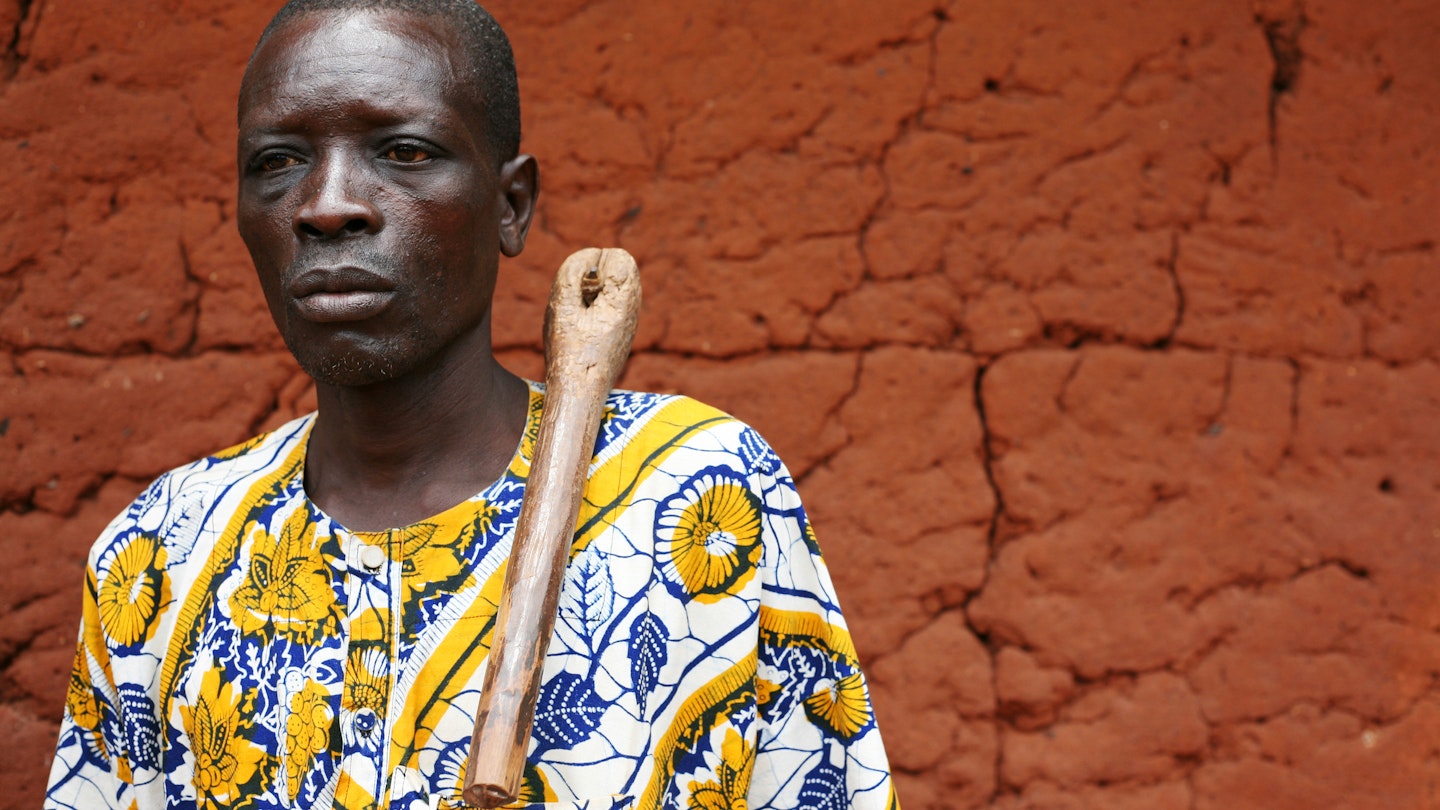Benin is the birthplace of Vodou – a religion that worships natural spirits and reveres ancestors. It was also a significant source for transatlantic slave traders, a history explored through its museums.
This small West African country is blessed with luscious natural surroundings, beautiful beaches, and unique markets, making it a popular destination for adventurers eager to discover the country’s rich culture.
1. See Ganvie, the Largest Stilt Village in Africa

As far as Benin experiences go, Ganvie, often referred to as the “Venice of Africa,” is a must-visit. This ancient stilt village is home to “watermen,” people who have adapted to living in the shallow waters and islands of Lake Nokoué.
The village traces back to the transatlantic slave trade when the Tofinu people fled to seek refuge from slave hunters. Today, Ganvie has a population of 20,000 people whose primary sources of income are fishing and tourism.
A day trip to Ganvie, just 9km from Cotonou, allows visitors to immerse themselves in local culture and enjoy birdwatching, as Lake Nokoué is home to various bird species.
Planning tip: Verify the excursion prices to avoid overcharging by tour packages, as Ganvie is a popular tourist destination.
2. Discover Occult Culture in Ouidah

When visiting Benin, Ouidah should top your itinerary. Known for its darker attractions, it offers unique experiences, such as the Temple of Pythons where pythons slither amid Vodou rituals. Explore the local Musée de la Fondation Zinsou for insights into Benin’s colonial history, and reflect on the Route des Esclaves that memorializes the enslaved people’s journey.
Planning tip: Organize a fee with your driver that encompasses entrance fees to save on costs.
3. Embrace the Hustle and Bustle of Cotonou
Cotonou, the beating heart of Benin, offers numerous activities for travelers. For souvenirs, the Artisanal Centre features captivating trinkets, while the Grand Marché du Dantokpa is perfect for an expansive shopping experience, providing everything from seafood to local crafts and even supplies for Vodou rituals.
Local tip: Avoid walking or swimming alone on the beach at any time.
4. Dive into the History of the Ancient Capital of Abomey
History enthusiasts should not miss the Royal Palaces of Abomey, a UNESCO World Heritage site that recounts the tales of the Dahomey Kingdom, which thrived between 1600 and 1814. Despite their current decrepit state, the palaces hold significant historical value.
Visitors can also experience the “Walk of the Slaves,” a memorial path symbolizing the journey of enslaved people, lined with statues and memorials.
Planning tip: Travel by road, as Abomey is distanced from other attractions.
5. Explore Portuguese Remnants in Porto-Novo

Porto-Novo serves as the capital of Benin, brimming with historical allure linked to the Goun people’s kingdom and its colonial ties to the French. Here, you can witness architecture influenced by the Portuguese and Brazilians, including the Grand Mosque built in a unique colonial style.
Additional attractions include the Musée Ethnographique de Porto Novo, showcasing the customs of various tribal groups, and the Centre Songhai, a hub for sustainable farming.
Planning tip: After exploring the historical sites, take some time to enjoy Porto-Novo’s serene beaches.
6. Relax at the Secluded Beach Getaway of Grand-Popo
Grand-Popo is a tranquil retreat that preserves authentic culture and traditions, making it ideal for a relaxing getaway. Visit Bouche du Roy, where the river meets the ocean, and the Villa Karo, a cultural center that fosters West African and Finnish interactions. For a deeper connection to local life, explore Lac Ahémé, where women harvest salt using traditional methods.
7. Go on a Wildlife-Spotting Safari in Pendjari National Park
Pendjari National Park is home to a diverse array of wildlife, including lions, hippos, elephants, and buffalo. This stunning reserve spans 2,755 square kilometers, with scenic areas tucked away in hills and cliffs. The region’s tropical climate nurtures lush vegetation, creating opportunities for wildlife observation and birdwatching.
Planning tip: Bring a hat and sunscreen for your safari outing.
8. Detour to the Home of Shea Butter
Natitingou, located just 50 kilometers from Pendjari National Park, is famous for its shea butter production. Visitors can explore a museum housed in a colonial building that unveils the rich history of the Somba people. This area is the perfect destination to learn about local culture and witness shea butter production firsthand.





